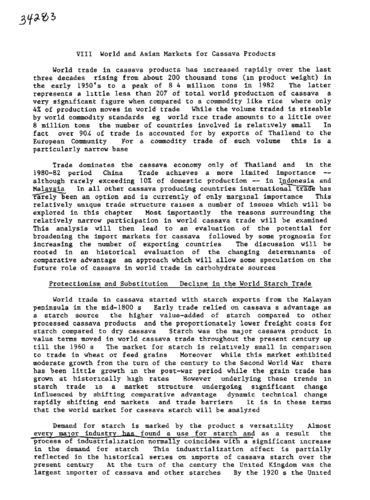World and Asian markets for cassava products
This analysis of global and Asian markets looks at protectionism and substitution (decline in starch trade, rise in trade of cassava feedstuffs) and the Asian regional market for cassava feedstuffs. The degree of substitution between cassava and grains has increased measurably during the postwar period. Cassava's future in world markets depends on its ability to compete with grains; so far this has depended on grain pricing policies and tariff structures of importing countries, making cassava trade more vulnerable than the international grain trade. Cassava competes on a cost, not a price basis. If growth in cassava exports is based on small farm production, initial growth would be based on small-scale processing units, which would call for developing a critical production vol. based on domestic markets, in the 1st place. Except for Thailand, production has not been able to meet the rising demand for products. Improved var. and production technology could provide the increased vol. necessary to meet the domestic demand. Then, if surpluses develop resulting in cost reductions, the country could compete in international markets. (CIAT)

